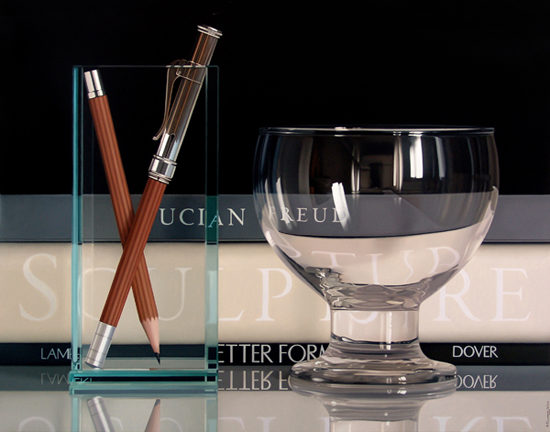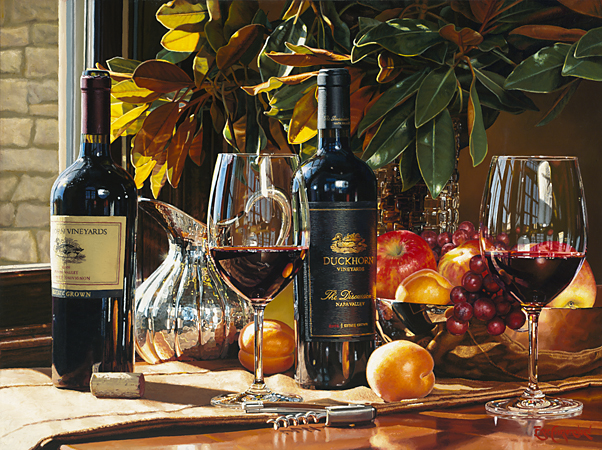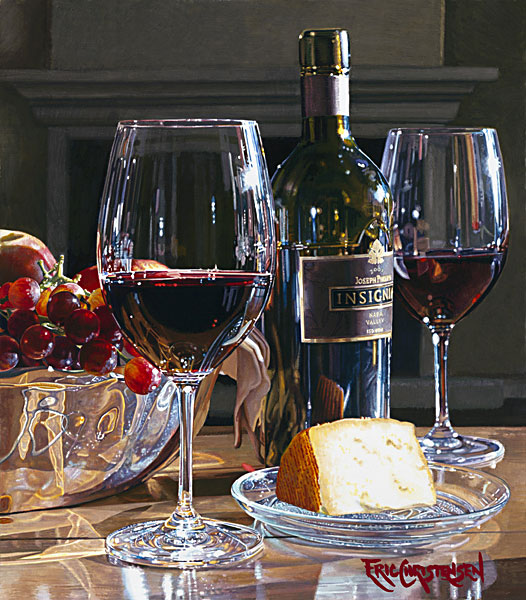Hyperrealism is my favorite style of painting. Then again, I’ve always felt like life, as it is, is beautiful. Life, in all of its messy, unpredictable madness of patterns and light, din and music. It is difficult to explain, but when I see a certain style of painting in the hyperrealism genre, I instantly get the same overwhelming sense of joy that bursts forth when I discover a highly profitable, well-run business or when I hear a unique composition that comes out of nowhere. (As I write this, I’m listening to “Good Intention Paving Co.” by Joanna Newsom, which Aaron introduced me to a few hours ago.) It is the same thing behind my enjoyment of Trompe L’oel paintings.
[mainbodyad]One of my favorite artists is Eric Christensen. He tends to paint bottles of wine and food scenes in the hyperrealism style. When I talk about pursuing your passion and doing what you love regardless of social expectations, provided you harm no one else and are self-sufficient, this is a small example of that. I would much rather own an Eric Christensen hyperrealism painting than a Matisse. To be perfectly honest, if I had a Matisse, I’d probably throw it out with the garbage because it does absolutely nothing for me. (Works like “Music” by Matisse make me almost downright contemptuous; unimaginative prat twaddling about wallowing in self-absorbed mediocrity.)
But remember, I spent my undergraduate years studying classical music and business so I have a deep, deep appreciation for technical mastery (and I am aware of the difference between an artist and a craftsman). The same thing that makes me sit in awe of Diana Damrau’s portrayal of Mozart’s infamous Queen of the Night causes me to brim up like an overfilled chalice, bubbling over with unbridled joy when I see the paintings below … it does something to me far more than just craft. To put it more bluntly: In artistic terms, a Jackson Pollock has more utility to me as firewood than it does as art. Rothko is a joke.

This painting, called "Up for Discussion" by Eric Christensen, is a perfect example of hyperrealism.

Another Eric Christensen called "Shades of Summer". For me, it is the ability for a man to paint in watercolor and yet capture the reflection of light off the glass so perfectly. The world itself is already so beautiful I don't see how people can't see it.
Likewise, the work of Pedro Campos just amazes me.

This oil on canvas 116x81 cm is not a photograph, it is a painting by Pedro Campos. Again, it is the details, such as a flawless reflection on the glass, and the almost painful clarity of focus that creates an almost emotional response that I can't put into words.
Steve Mills is another great hyperrealist painter.
The moral of the lesson is that it is a terrible sin to surround yourself with things or live your life in a way designed solely to make other people happy. If you need public approval for your own sense of taste, you haven’t any at all; you are merely an impressional canvas waiting for stronger personalities to draw upon you. I’m sure someone out there is outraged at my disgust with the cartoon scribblings of Matisse. That is fine, as long as they truly appreciate the work and aren’t merely parroting the establishment line.
The mundaneness is the beauty. The prosaic subject is the spark. We take the world around us for granted, not realizing how spectacular it really is.








